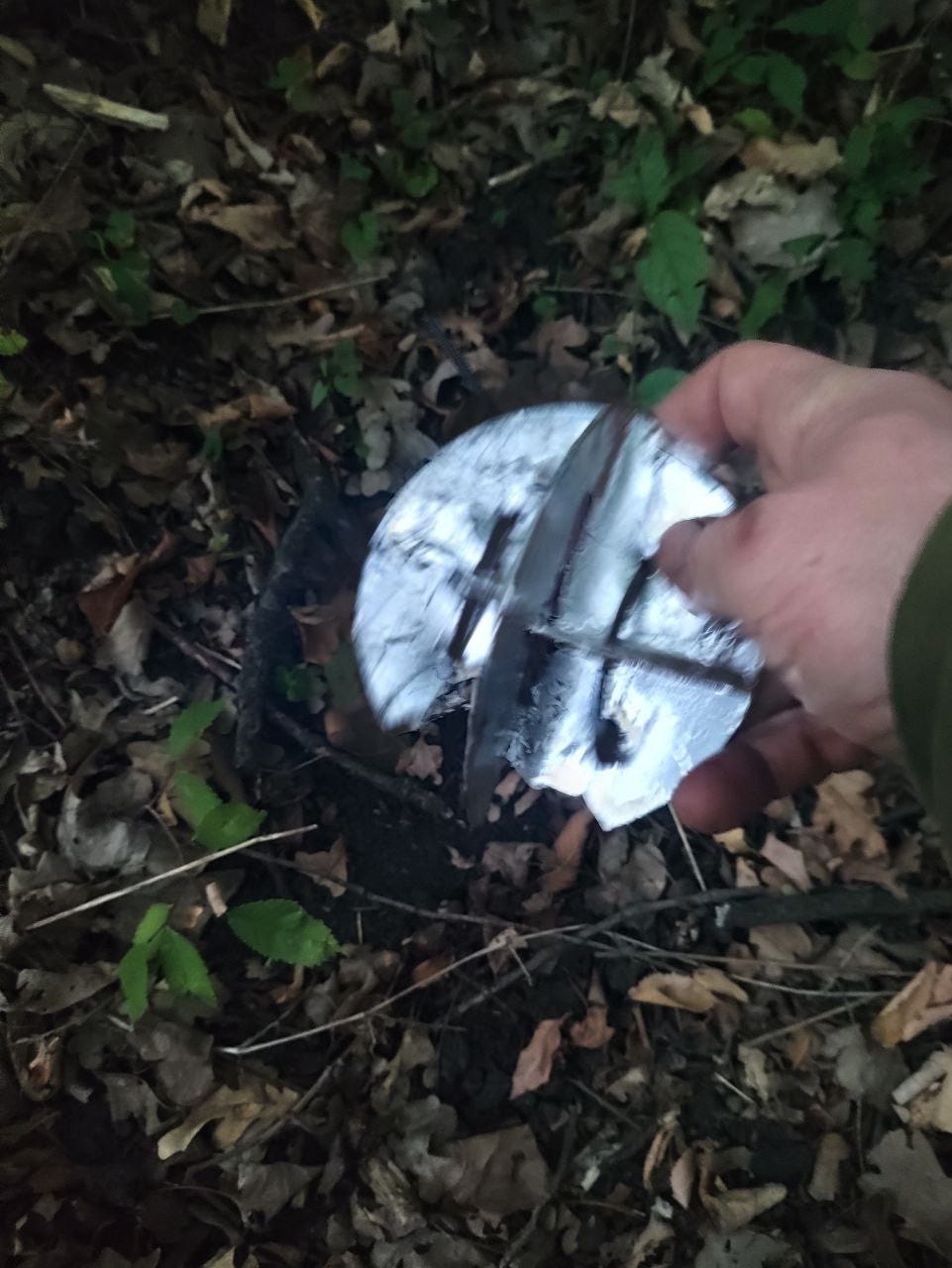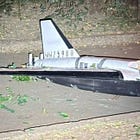New Video Appears To Document Use Of Ukrainian Command-Detonated Fixed-Wing Anti-Aircraft Interceptor Drone
🇷🇺 🇺🇦 Commentary
A new video that was uploaded by a prominent Ukrainian Telegram channel appears to document the successful employment of a Ukrainian command-detonated fixed-wing anti-aircraft interceptor drone. While Ukraine has been using both multirotor drones and, to a lesser degree, fixed-wing drones as uncrewed aircraft turned anti-aircraft interceptos in an air defence role with increasing regularity over the past year or so—Russia has emulated this approach, the publicly known anti-aircraft interceptors appear to be either remotely-piloted human-in-the-loop unarmed designs that must crashed into the intended target uncrewed aircraft or must be crashed into the target uncrewed while equipped with a small warhead that is equipped with an impact fuse. As I explained in several recent posts, this amounts to a very low-cost but also very manpower-intensive approach to air defence against small, slow, and low-flying aerial threats that is inherently susceptible to saturation attacks during the very brief timeframe in which the aerial targets are within range of a given interceptor drone unit. The new video indicates that Ukraine is pursuing something of a hybrid approach along the path that is likely to ultimately result in interceptor drones that amount to non-human-in-the-loop analogues to the various types of guided anti-aircraft missiles in existence.
The new footage was released as part of a compilation of interceptions. The relevant interception can be seen from the start of the video through 00:12. The first twelve or so seconds of the video record a (successful) single interception attempt on a Russian family fixed-wing loitering strike drone (an Izdeliye-51) from the vantage point of two Ukrainian drones: a Ukrainian armed fixed-wing interceptor drone and a “Ukrainian first-person video” (“FPV”) multirotor drone, which may have been unarmed.
Unlike most samples from this particular genre of anti-aircraft drone combat footage from the Russia-Ukraine War, including the other interception sequences that appear in this video compilation, the Ukrainian fixed-wing interceptor drone (A) does not crash into the intended target, but (B) is equipped with a warhead that detonates anyway. In itself, this strongly suggests that the Ukrainian fixed-wing interceptor drone was not equipped with a warhead that had an impact fuse, which is the most common type of fuse employed on armed multirotor drones and armed fixed-wing loitering strike drones in the Russia-Ukraine War. While proximity fuses are an option and make a lot of sense in this particular anti-aircraft application, proximity fuses are somewhat expensive and appear to be uncommonly used on various types of uncrewed aircraft in the Russia-Ukraine War.
Something must have initiated the unambiguous detonation of the warhead just as the (faster) Ukrainian fixed-wing interceptor drone was about to overtake the Russian loitering strike. This video is likely to document a Ukrainian command-detonated fixed-wing interceptor drone that, as the name indicates, did not require a direct hit on the target uncrewed aircraft so as to detonate the blast-fragmentation warhead. While uncertainties remain, it is possible that the footage of the interception recorded by the remotely piloted Ukrainian multirotor drone, which features the line of dots in the center of the screen—the forward pair of rotors are also visible, exists because the multirotor drone was used to monitor the engagement for review. The presence of visible band footage from the nose-mounted electro-optical sensor installed on the Ukrainian fixed-wing interceptor drone suggests that this was also a remotely piloted uncrewed aircraft design. The interception sequence was likely enabled by a suitable high-frequency ground-based acquisition radar, such as one of the RADA designs transferred to Ukraine, that is optimized for detecting quite small, slow, and low-altitude targets over fairly short distances. Given this, we are likely dealing with a situation in which a Ukrainian combatant—perhaps the remote human operator—manually detonated the fixed-wing drone interceptor in an interception attempt that was likely enabled by a ground-based acquisition radar and a multirotor drone that acted as an aerial spotter—and perhaps a backup interceptor.

It is worth noting that there are images circulating online that are suggestive of the installation of what may amount to radar reflectors on multirotor interceptor drones, a practice that is likely intended to allow the operators of a suitable high-frequency ground-based acquisition to track both the target uncrewed aircraft and the multirotor interceptor drone launched in its pursuit. Such tracking will enable the remote command detonation of the warhead via radio. While the forward-looking electro-optical sensor/camera mounted on the Ukrainian fixed-wing interceptor drone offers its remote human operator/pilot feedback, the operators of a suitable high-frequency acquisition radar, such as one of the RADA designs, are better positioned to track the flight of both aircraft and detonate the warhead without the use of a fairly expensive proximity fuse. In time, the detonation of the warhead may be automated using radar tracking data along the lines of a command-guided surface-to-air missile. Ultimately, militaries will likely want fully automated short-range low-altitude air defence systems that employ fixed-wing and/or multirotor interceptors that are fully automated—independently fly toward the target(s) based on radar tracking data—as opposed to manpower-intensive remotely piloted uncrewed aircraft turned anti-aircraft munitions.



